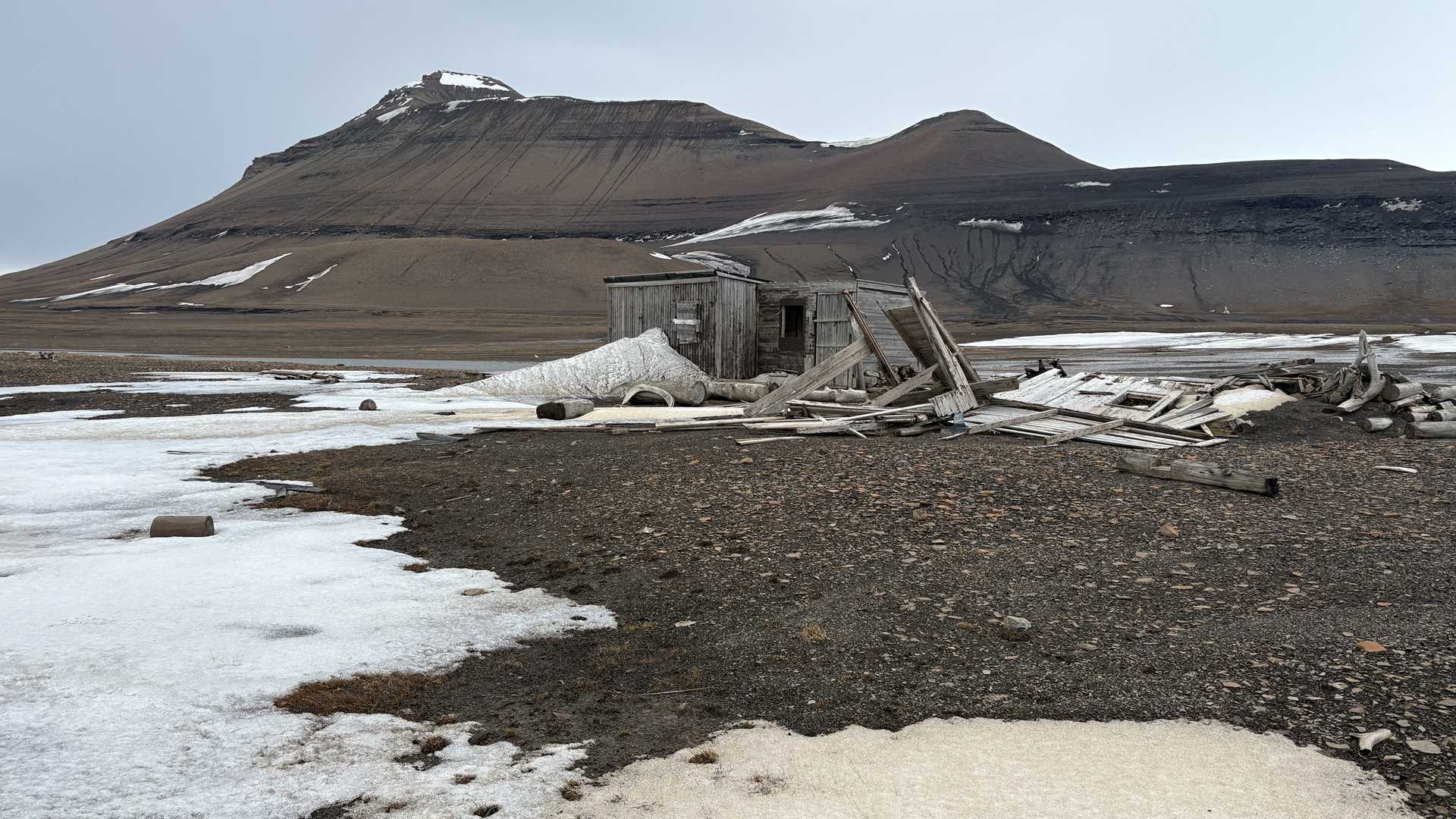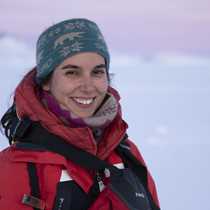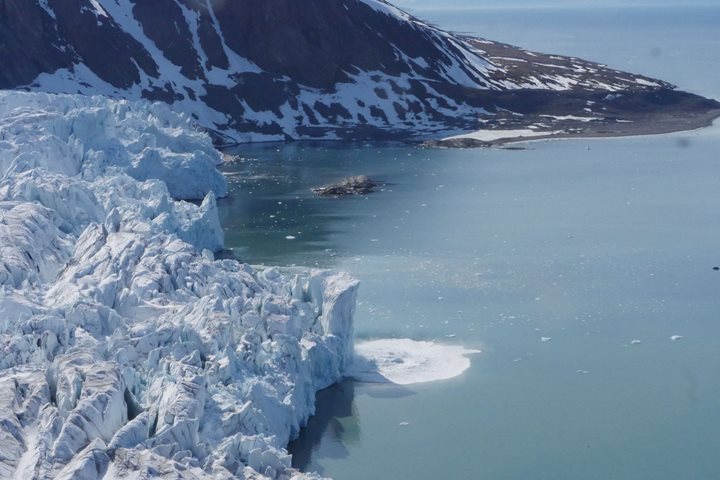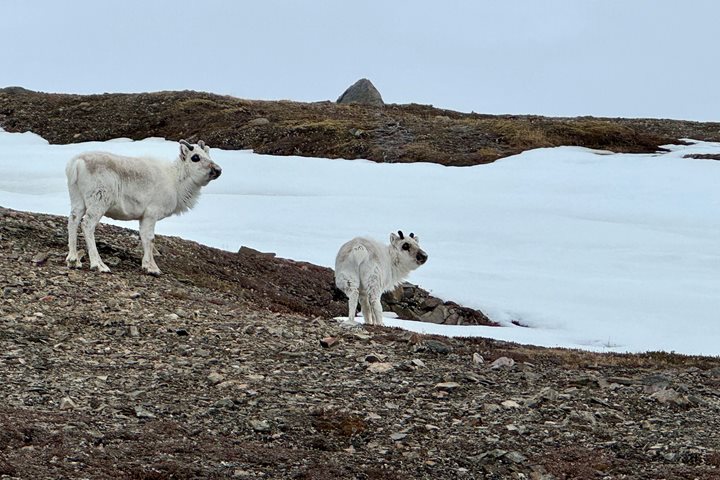Our second day in Svalbard began with a landing at Diskobukta on Edgeøya Island, the third largest in the archipelago. As we approached the landing site, we spotted several reindeer grazing on the plains. Our walk on shore took us deep into a canyon where hundreds of black-legged kittiwakes were nesting. What a wildlife spectacle it was—immersed in the piercing cries of birds echoing through the canyon. Then, a beautiful little Arctic fox appeared and seemed to greet us.
In the afternoon, we visited Kapp Lee at Dolerittneset, where we caught a glimpse of a few walruses, the only surviving members of the Odobenus genus and among the largest pinnipeds in the world. Unfortunately, this site also reflects one of the darkest chapters in Svalbard’s human history. Hundreds of walruses were hunted here during the 17th and 18th centuries. Remnants from those days are still visible: a large “walrus graveyard.”
It was a day of stark contrasts between the wildlife of today, which slowly claims back what used to be theirs, and haunting echoes of the past.







